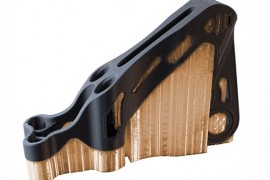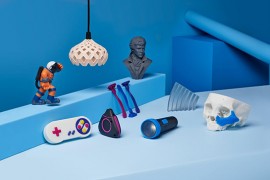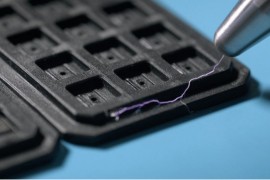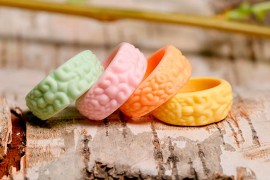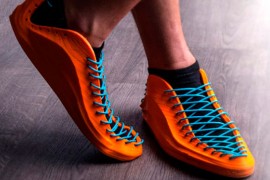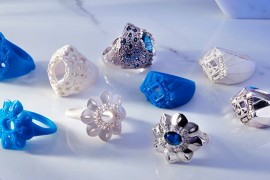
Education through entertainment has been applied for more than 50 years, but it is now reinventing itself by introducing new possibilities and ways of learning thanks to new devices and tools.
Thus, it is possible to foster STEAM skills in children and teenagers by achieving practical and visual learning while entertaining and having fun. STEAM skills are the skills gained in the fields of science, technology, engineering, art and mathematics.
Stimulating the brains of young children is very enriching and productive, as knowledge is acquired more quickly and effectively at an early age than in adulthood. When it comes to realising certain projects, children and adolescents can understand complex concepts by assimilating them through practice, and maintaining motivation throughout the learning process.
Mayku, a company dedicated to the development of easy-to-use desktop equipment, has developed Formbox, a desktop thermoforming device that allows the creation of moulds, prototypes or packaging from a matrix. Mayku is a very useful device for designers, architects or pastry chefs, but it can also be very useful for educational establishments. In this field it also has Mayku Teach, a simple and intuitive online educational platform where you can obtain all the necessary resources for the practical teaching of STEAM subjects.
Below are 10 projects devised by Mayku with which to encourage and improve STEAM (science, technology, engineering, art and mathematics) skills in children through manufacturing with the Mayku Formbox:
Science
1. Properties of materials: How to make an ice lollipop with the Mayku FormBox. In this case, the children have to design and make moulds and then make lollipop-shaped ice lollies to learn about the chemical and physical properties of materials and how temperature alters their state.
2. Earth and Space: For this project, children are asked to make concrete sundials from a FormBox mould to learn about the movement of the Earth, about light and shadows and how these can be used to tell the time.

Image 1: Projects 1 and 2. Source: Mayku.
3. Living things: This project is based on making a bird feeder using FormBox. The children have to design the bird feeder and create the mould. Then they have to make the bird feeder with seeds using the mould and hang it up. With this project the children learn about their local environment and living things, focusing on what birds need to survive.
4. Forces: This project involves making a boat. The children have to design and make a mould. They must then make the hulls and sails of boats to sail them in a tub of water to learn about the effects of air resistance, water resistance and friction, which act between moving surfaces.

Image 2: Projects 3 and 4. Source: Mayku.
Technology
5. Circuits: Creation of a buzzer. Once the design has been carried out, the children have to make the mould to create an electronic buzzer. This project is very useful for learning about circuits: how and why current flows, how electricity powers machinery. In addition, the assembly of components is practised.
Engineering
6. Engineering: In this project the children have to build a car with Mayku FormBox. To do this, they have to design toy cars on a string and make them by making moulds. They learn about kinetic energy, elastic potential energy, aerodynamics and forces such as air resistance and friction.

Image 3: Projects 5 and 6. Source: Mayku.
Art
7. Art and design: Creating miniature terrariums. In this project, children learn how to make a terrarium from a mould. To do so, they have to fill the mould with concrete and then insert the necessary elements for the creation of the terrarium. This project allows them to learn about the connection between art, nature and science, terrarium design and the conditions that different plants need to thrive.
Mathematics
8. Fractions: Designing a farm. Following the design, children should create the mould and make the different sections of a farm to learn about fractions, decimals, percentages and how different ways of expressing proportions are.

Image 4: Projects 7 and 8 Source: Mayku.
9. Measuring: This project involves making a baking game with Mayku FormBox. To do so, children have to make moulds to make cake pans and measuring spoons, and then bake a cake. This project provides knowledge about measurements, units, mass, volume, capacity and how to convert between metric and imperial units.
10. Properties of the shapes: Making a spinner or spinning top. The children must create, after designing the mould, a spinning top and a game. With this project, children can visualise in a practical way and understand concepts such as angles and dimensions, which is very useful for explaining the properties of shapes and solving geometric problems.

Image 5: Projects 9 and 10. Source: Mayku.
This list includes some examples of the wide variety of creations that children can make with Mayku Formbox to stimulate their imagination and learn in a creative and fun way.
All projects can be carried out safely by children from 8 years old under adult supervision, and by children from 12 years old without supervision.
These projects can be carried out at home, but they can also be very interesting for educational centres, carrying out tasks aligned with the curriculum. In addition, Mayku offers complementary content as well as didactic videos focused on project-based learning on its website.

